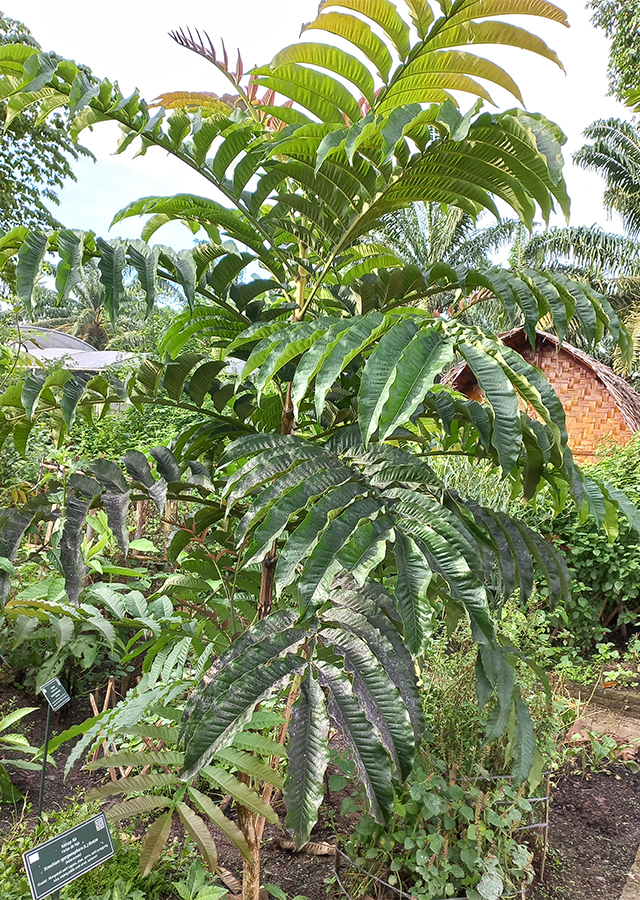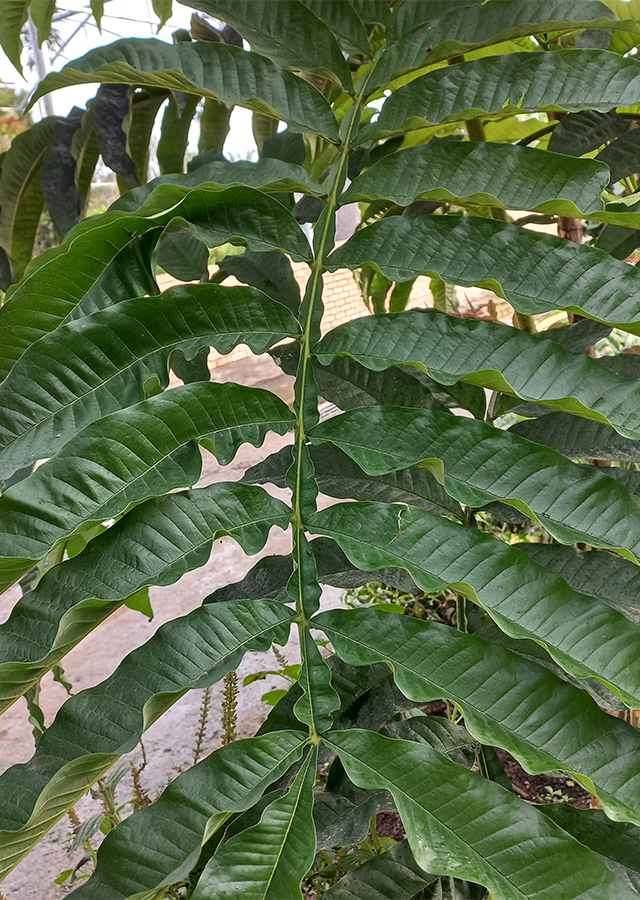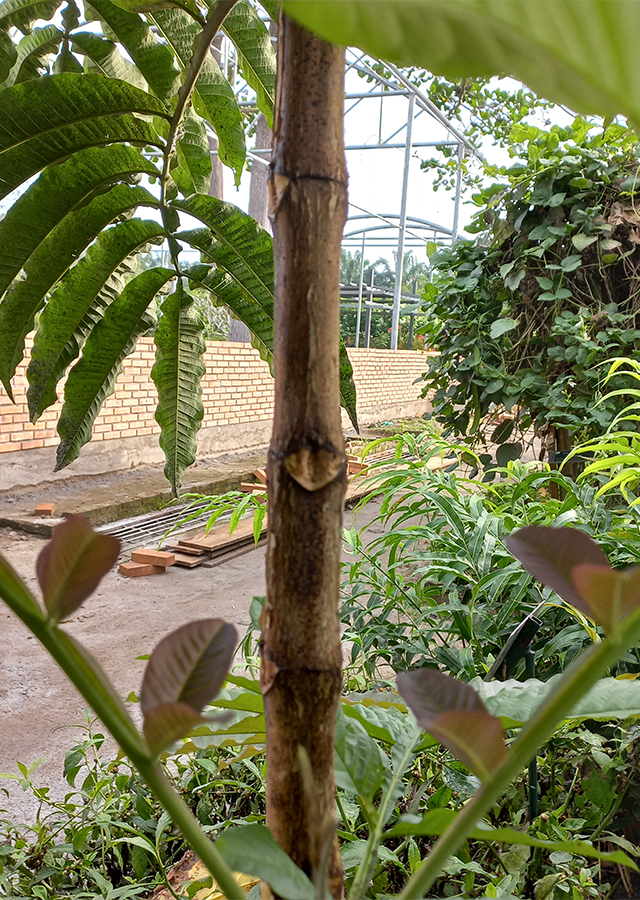False Elder
Peronema canescens Jack
Lamiaceae
Location in our garden
Principal



Synonym
Peronema heterophyllum Miq.
Habitus
Trees. An evergreen or deciduous shrub or small to medium-sized tree with an ovoid crown that can grow up to 20 m tall with occasional specimens up to 30 m tall
Part Used
Leaves
Bark
Growing Requirements
Full Sunshine
Habitat
Wetland
Riverbanks
Forest
Terrestrial
Overview
Peronema is a monotypic genus and is native in Peninsular Malaysia, Sumatra, the Riau Archipelago, West Java and Kalimantan (especially the centre). It is cultivated in Indonesia, Malaysia and Thailand. It may have been introduced into Java from Sumatra but it is now fully naturalized. The plant is harvested from the wild and used locally as a timber and for medicinal purposes. It is also cultivated as a hedge plant and used in reforestation schemes.
Vernacular Names
Sukai (Malay), Sangkae (Thai)
Agroecology
A plant of the lowland tropics, where it is found at elevations from sea-level up to 600 m, occasionally 900 m. Grows best in moist to wet sites, even if they are flooded seasonally. It needs much light for optimal growth. Plants do not withstand very dry conditions well.
Morphology
- Roots - superficial, with a short taproot.
- Trunks - bole straight or slightly flexuous, branchless for up to 9(-15) m, up to 70 cm in diameter, usually with small buttresses; bark surface dirty grey or light buff, smooth to fissured and fibrous or scaly; crown ovoid; twigs 4-angled, densely short-hairy.
- Leaves - opposite, imparipinnate, purplish tinged when young; petiole and rachis winged, leaflets in 3-11 opposite or subopposite pairs, sessile or shortly stalked, lanceolate, up to 35 cm × 7.5 cm, base cuneate and slightly unequal, acute to acuminate at the top, the upper leaflets increasing in size, margin entire (serrate in saplings), densely pubescent and pale whitish beneath, lateral veins 20-30 pairs, parallel, prominent below; stipules absent.
- Flowers - bisexual, small, subsessile, 5-merous; calyx densely pubescent outside, about 2.5 mm long but slightly enlarged in fruit, the lobes slightly shorter than the tube; corolla bilabiate, with a short bell-shaped tube, white or greenish-white, appressed pubescent outside, stamens 2, inserted at the base of the widening part of the corolla tube, far exserted, filaments glabrous; ovary 4-celled, the cells 1-ovuled, densely pubescent, style far exserted, with a subulate top.
- Fruits - drupaceous, dry, globose, small, 3-3.5 mm in diameter, densely pubescent, splitting into 4 parts, with many pendulous seeds.
- Seeds - cotyledons equal, petiolate, ovate with an emarginate apex, entire or coarsely 2-4-dentate; first leaves pinnately lobed, subsequent ones imparipinnate.
Cultivation
- Propagated by seeds - seed - germinates quickly in full light, but collected seeds do not germinate well.
- By stem cuttings - taken from straight trees is the most common method of propagation.Trees from stem cuttings will finally develop a superficial root system similar to that of trees grown from seed. Cuttings placed directly in the soil may develop rot, especially at the base if thick. After 4 - 6 months the young plants may be transplanted.
Chemical Constituents
Cellulose, pentosan, ash, and silica.
Traditional Medicinal Uses
- In traditional medicine the bitter juice of the leaves and a decoction of the bark are used against fever.
- Boiled leaves are used in a poultice against ringworm, and in a mouth-wash against toothache.
Part Used
Reference Sources
- Fren, Ken. Useful Tropical Plants. (2021). Peronema canescens. https://tropical.theferns.info/viewtropical.php?id=Peronema+canescens. 12-10-21.
- Plant Resources of South East Asia. Peronema canescens. https://uses.plantnet-project.org/en/Peronema_(PROSEA). 12-10-21.

